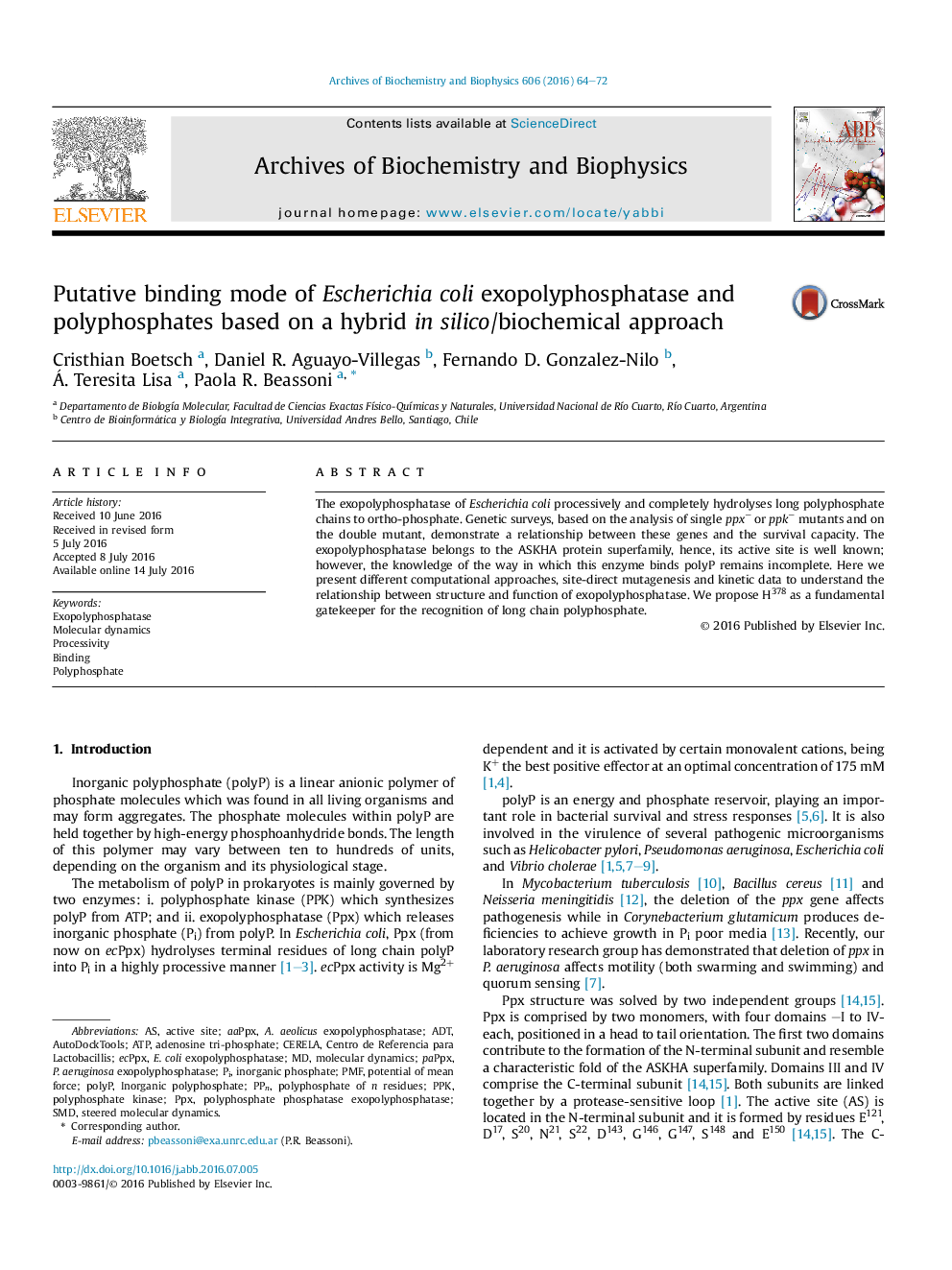| Article ID | Journal | Published Year | Pages | File Type |
|---|---|---|---|---|
| 1924699 | Archives of Biochemistry and Biophysics | 2016 | 9 Pages |
•We propose binding sites for polyP beyond active site.•Only large polyP can transverse the aqueduct of Ppx.•H378 acts as a gatekeeper changing its protonation state to bind or release polyP.•The variant lacking the gatekeeper residue is unable to distinguish polyP length.
The exopolyphosphatase of Escherichia coli processively and completely hydrolyses long polyphosphate chains to ortho-phosphate. Genetic surveys, based on the analysis of single ppx− or ppk− mutants and on the double mutant, demonstrate a relationship between these genes and the survival capacity. The exopolyphosphatase belongs to the ASKHA protein superfamily, hence, its active site is well known; however, the knowledge of the way in which this enzyme binds polyP remains incomplete. Here we present different computational approaches, site-direct mutagenesis and kinetic data to understand the relationship between structure and function of exopolyphosphatase. We propose H378 as a fundamental gatekeeper for the recognition of long chain polyphosphate.
Graphical abstractFigure optionsDownload full-size imageDownload high-quality image (356 K)Download as PowerPoint slide
